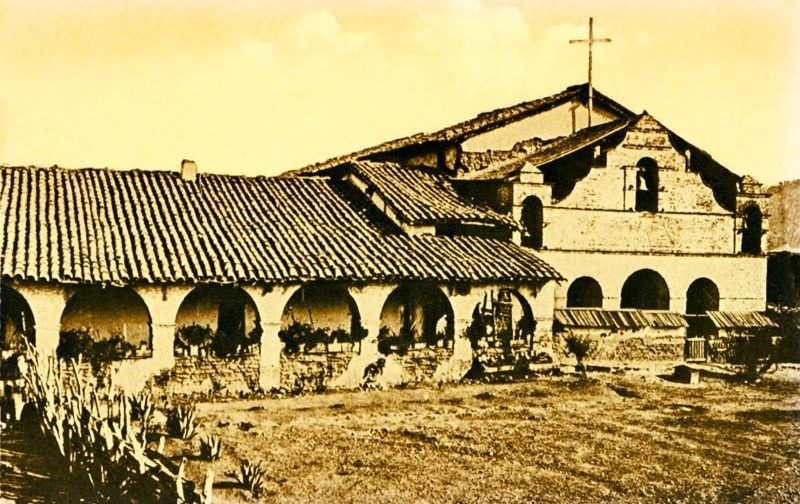In the summer of 1771, a little group of Franciscan Missionaries headed by Padres Junípero Serra, Miguel Píeras, and Buenaventura Sitjar entered the Valley of the Oaks. In this secluded canyon, the Padres hung a bell on the branches of an oak tree. Padre Serra tolled the bell with vigor and so was that on July 14, 1771, he founded Mission San Antonio de Padua, naming it for Saint Anthony. It was the third mission devoted in the chain after those of San Diego and Monterey, the last later moved to Carmel.
The mission site, south of Monterey, had been chosen earlier. Father Serra lost no time and returned to the area to begin the establishment of Mission San Antonio de Padua. However, water sources in the area proved inconsistent thus, in 1773, the Fathers moved the mission site farther up Los Robles Valley to its present spot. Towards the end of the same year, the Mission Fathers had already built a small church and dwellings. In 1779, the Franciscans replaced the first temple with a bigger adobe church and a small sacristy.
The Franciscans started working on the third and final adobe church in 1810 and completed it three years later in 1813. The substitute church was 200 feet long and 40 feet wide, and its adobe walls were about 6 feet thick. It is the same church building that stands reconstructed today.
From its beginning, San Antonio de Padua proved to be a very successful mission, and, in its prime, was the home of thirteen hundred Indians. The Franciscan Fathers devised and built an extensive aqueduct system to gather water from the nearby San Antonio River. The vast water system of aqueducts, dams, and reservoirs proved fundamental to the success of this mission. Much of the water system is still visible today.
The mission was secularized in 1834 and offered for sale in 1845, but no takers were found. In 1862, President Abraham Lincoln returned Mission San Antonio de Padua in conjunction with 33 acres of its surrounding land to the Catholic Church. Eventually, after much neglect, the mission was abandoned in 1882 and plundered of all usable construction materials.
Between 1903 and 1908, the California Landmark League, under the leadership of Joseph R. Knowland, began to restore the mission. The rebuilding was ongoing when the great earthquake of 1906 destroyed most of the restoration works. After the earthquake, only the walls and brick façade of the old church were still standing, along with a few rows of brick arches.
In 1948, the Franciscan Fathers returned to the mission and, upon receiving a grant from the William Randolph Hearst Foundation, began a major restoration work that ended in 1952. Present reconstruction is the result of their hard work. To restore the 1813 mission church as closely as possible to its original appearance, the Franciscans utilized the same construction methods and materials employed by the first builders.
Today, Mission San Antonio de Padua spreads out beautifully in an oak-studded valley. It is the only mission whose surroundings still look as they once did. Here, travelers can delight in the spaciousness that characterized all missions at the height of their success.
Location of Mission San Antonio de Padua
1 Mission Creek Road, Fort Hunter Liggett, CA 93928, United States
